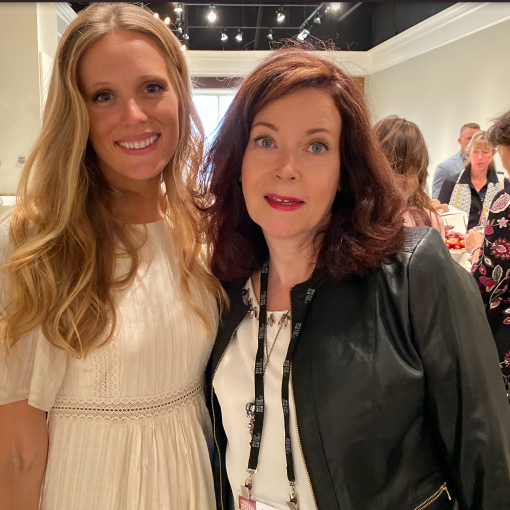
Marketers love storytelling. I know. I’ve presented all kinds of storytelling programs, including digital marketing and storytelling. Yet, is storytelling the right way to build brands – and even tell stories? Are the 4Ps ready for a makeover? Is it time to update the marketing customer experience design approach? What happens when we build brands with STOP marketing as a customer design experience, not storytelling?
At American Marketing Association’s 2020 AMA Experience Design Virtual Conference, Russ Klein CEO, American Marketing Association took us into the future of customer experience design and marketing during a virtual event.
Prior to joining AMA, Russ Klein quarterbacked teams for many of the world’s foremost brand names. As CEO for the American Marketing Association, Russ is charged with the transformation of the AMA to become the essential community for marketers. Thanks again to Russ for the marketer’s confidence interview on wiredPRworks. Here are my notes from Russ’s excellent presentation.
“End your Addiction to Storytelling: Building Brands through Experience”
Russ led this virtual session . . . “Agencies and marketers alike are addicted to storytelling. The advent of so-called content marketing is the thought that every problem can be solved by telling a better story. Soon they are going to miss a window of opportunity that will quickly end up in someone else’s portfolio. Marketers and agencies need to replace storytelling with a structural framework to reset the stage for experience-driven brand building. Experience design is the next frontier for brand-building.” source: AMA Virtual Conference Experience Design
Design Thinking + Decision Science = Experience Design
Design thinking, as a skillset, is new in the context of marketers.
Taking an online course or two will help you understand what design thinking is. Decision science is how people make decisions.
Marketers have an addiction to storytelling. Marketers have gotten into the habit of using storytelling to solve every problem. People lean on storytelling as a crutch.
And while content marketing is very effective and very useful, the 20th-century brand = promise + experience to the power of story. We’ve made a lot of broken promises. People have let customers down over the years. If the experience is zero, the brand falls apart.
From Marketing 4Ps to STOP Marketing
Every marketer is well aware of the four Ps, the pillars and posts of marketing. Here’s how the Ps transform to the new STOP model.
Product– SolutionPrice– TimePlace– OmnichannelPromotion– Participation
In the post digitization era, four markers changed our world.
1. Amazon.com and Jeff Bezos marked the advent of e-commerce
2. In 1993 Apple introduced a new term, “user experience.” The user experience is now physical and digital.
3. Social media changed the author of the brand story. Brands are no longer in charge of their own story, customers can be public critics, commentators, influencers, or enthusiasts. What is the power of Facebook? What makes Facebook work is Metcalfe’s law. This network effect, doubles and triples and magnifies to exponential value. Think of yourself as a node on the Facebook network.
4. Starbucks built its business on word of mouth simply by delivering a differentiated and reliable experience. We found you can build a brand on experience alone.
Replace Products with Solutions
Russ says: Nobody wants your product! Everybody wants a solution.
When you think of a product as a product and you’re looking for growth and innovation, you need to remove “product” from your nomenclature. Henry Ford thought about how to revolutionize travel, not how to make cars.
When you remove “product” and replace it with “solution,” you open the aperture so much wider.
Kids, of all ages and generations, want fun and playfulness and entertainment – think about how your product solves for play.
If something doesn’t work it’s set aside. Brand loyalty has been on decline since WWII.
Introduce a basic idea of usability with a hierarchy of solutions. Variables might include functional, dependable, usable, emotional, utility, accessible, learnable, easy to remember, error-tolerant, or affirmation.
We all know shampoo doesn’t need to foam and have suds to clean, but the foam gives us affirmation that it’s working. A popup affirmation that a file has downloaded completes the process. When you don’t get that confirmation, you may wonder if the file is actually on your computer.
Reframing Product as a Simple Error-Tolerant Solution
Microwaves are not error-tolerant. Why are there so many buttons if all you want to do is warm up your food?
TV remotes are also not error-tolerant. Voice will save the day for products like this.
There’s a failure to design for simplicity. Understand how much the customer wants done for them and how much they want to do for themselves.
Who’s doing solutions well?
Virgin American is the #1 app in Google Play. While the app is the fastest flight booking agent at under 60 seconds, it offers only three actions.
- Check-in
- Boarding pass
- Flight alerts
It’s not about what’s possible, it’s about what’s relevant.
Replace Price with Time
The number one source of annoyance for consumers is wasting time.
People are okay with waiting if they know how long they’re going to wait.
Hourglass traffic lights show progress. Drivers do value time.
Replace Place with Omnichannel
All the marketing channels come together in a stew in the way customers transact together.
The mobile phone is at the center as a medium for communication and distribution.
Most American firms use about eight channels. Find the ones with the most yield and don’t worry about channel distribution. Marketing has gone from Cinderella as being not interesting to the princess of the ball.
The power of being at your customer’s arm’s length gives you context, access, and immediacy. For example, Domino’s wide aperture of distribution lets you order a pizza in 10 different ways. A telephone is the 11th way.
Replace Promotion with Participation [Engagement]
What is customer engagement? Social currency is defined as: Customer Engagement = direct transaction + indirect participation
How does a brand-owner tell a powerful story that generates results and wins awards?
Without tension, there can be no great advertising nexus of customer, context, and brand. Identify a source of brand tension and use your solution to discharge that tension.
This is the most effective and profitable way to market.
Tensions are not about right or wrong.
A few examples: online vs. offline, singularity vs. humanity, and millennial vs. boomer. The value proposition is like the nugget in the candy bar while experience design is the coating.
Intentional Experience Design = 2xs growth rate
Who created the first intentional experience design?
Religion tweaks all five senses with emotion, color, light, negative space, sounds, chorus, and organ music. The most important thing about religion is ritual.
Ritual = Meaning Brands that enjoy ritualistic connections are more profitable.
Big R and small r rituals
Small r rituals are nimble and casual with a personal meaning. For example, reading the Sunday paper or getting your morning cup of coffee.
Big R rituals are on a grander scale with a bigger meaning. For example, World Cup Soccer, music festivals, and holidays.
Brands are about meaning.
How do we take a useful solution and bump it up to Big R status? How do I look at my solution as part of a ritual that’s already out there and put my product in there?
Brushing teeth is a universal habit. Flossing is a tough habit to maintain. A water flossing toothbrush adds a solution to a morning ritual that saves time.
If you can’t become the ritual, cozy up to one that’s already there. When you look at the customer journey, you can identify where a customer experience would be transformative.
For example, origami toilet tissue tells a hotel customer we’ve been here, and we’ve taken great care to make sure your room is clean.
Target offers a great store experience design. Every sixth customer opens a new register and there’s a no-hassle money-back return policy.
Apple is known for its simple, intuitive, visual, ergonomic and elegant design details. Experience design isn’t just for service models.
Heinz Ketchup tilted its label to read when the bottle is at the right angle for easy pouring.
Giving a lagniappe, or something extra, is another way to improve experience design. Tiffany offers free jewelry cleaning for life. Maggiano’s doggy bag comes back with love aka extra food. Doubletree gives out chocolate chip cookies – here’s the recipe.
Where do you begin?
If you pave a sidewalk and customers don’t like going that way, they will carve their own dirt path from a to b.
The best design processes are those that adapt to the problem you want to solve, and not the other way around. We don’t design experiences. We design FOR experiences.
Don’t fight the dirt path.
Find the dirt path and plant flowers along it.
Design for the dirt path.
There’s a much greater return on removing negatives than boosting positives. Poor experiences don’t get second chances. Design for minimum lovable experiences.
As marketers, we now have unprecedented superpowers of data analytics and customer access. How are we going to use that power?
Post-Pandemic Marketing
Brace yourself for the undertow of anti-consumption.
75% of the GDP comes from consumer buying – what about the future?
To stay up-to-date subscribe to the AMA’s My AMA Daily newsletter. With 100,000 subscribers every issue is customized so that as you use it, it gets personalized with AI.
Stakeholder management is a science. There are three ways to motivate movement and ignite inspiration: force, persuasion, and buy-in.
Inspire alignment and buy-in by letting every team member see themselves as playing a starring role in a common vision. Try to get your team to feel comfortable, safe and nourished.
This is a teachable moment and a dress rehearsal for a longer-term trend for anti-consumption. We will see people consume less and less.
How will businesses create value and livelihood in a world where consumption is going to go down?
There’s an opportunity to think differently. If you act swiftly, you can get some things done. Be brave, think differently, learn, and then share throughout your enterprise.
The biggest stall factor in business is the failure to innovate.
How about you?
What is the next big solution in your innovation pipeline?
Could it be moving from the 4Ps to STOP: Solution, Time, Omnichannel, Participation?
Need ideas? Set up a virtual coffee talk.



